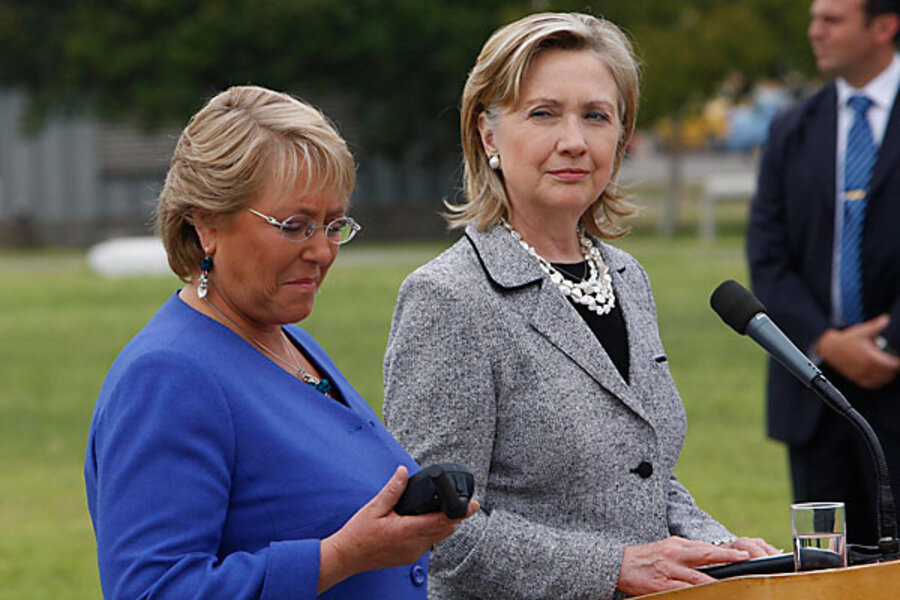Chile earthquake: Hillary Clinton arrives with satellite phones
Loading...
| Mexico City
When the 8.8 Chilean earthquake struck, most authorities – including the Chilean government – underestimated the damage.
By the next day, the death toll doubled to over 700, and the nation learned that many coastal towns were destroyed not by the earth’s movements but by giant waves generated in the aftermath. The reason for the miscalculation: there was no way to communicate from the hardest-hit areas.
While clean water, food, medical support, and rescue workers are the priorities in the hours after a catastrophe, so too are phones – so that governments can properly assess the damage, dispatch officials to hot spots, and distribute aid to those most in need.
IN PICTURES: Images from the magnitude-8.8 earthquake in Chile
So, after opening up to foreign aid assistance, Chile’s first request to the US was communications equipment. And that’s what US Secretary of State Hillary Clinton, on part of a Latin America tour that was scheduled before the quake, has brought with her today as she visits Chile.
"They have asked for communications equipment, some of which I am bringing on our plane," Mrs. Clinton said in Montevideo Monday, with new Uruguayan President Jose Mujica at her side. Her load includes 20 satellite phones and a technician. One of the "biggest problems has been communications as we found in Haiti in those days after the quake,” she said.
Clinton: US 'grateful' for Chile's help to Haiti
Later Monday, speaking alongside President Michelle Bachelet in Chile's capital, Santiago, Clinton said the US is "grateful" for what Chile did to help Haiti after that country's devastating Jan. 12 earthquake. Clinton said the Chilean rescue teams were "some of the best" in the world.
When the earthquake struck in the early hours of Saturday, the Chilean government initially said it would hold off on foreign aid until it assessed what needs – food, medical support, generators, phones – were the priority.
A day later, when a clearer – and grimmer – picture of the extent of damage became known, the government appealed for assistance. Telecommunications was atop the list.
Why telecommunication is so key
The importance of telecommunications was underscored in Haiti, as family members received texts from survivors buried under the rubble after a 7.0 quake struck in January and killed over 200,000 people. Many of them survived under buried buildings for days, and in some cases weeks.
But even in Chile, which boasts a sophisticated response system because it is one of the world’s most seismically active countries, details of the extent of damage still remain sketchy. And a lack of communications led to decisions – such as declining immediate foreign aid and waiting to dispatch troops to quell cases of looting – that Ms. Bachelet’s government has been criticized for.
“For 48 hours, the government did not know what was happening in the most affected zone,” says Oscar Godoy, a political science professor at the Pontificia Universidad Católica de Chile. “This country is not Haiti, and yet we do not have a system of satellite phones to be able to connect with the centers of [disaster zones.]”
In addition to technical support by the US, 45 satellite phones from the United Nations are expected to arrive today at Chile's Office of Emergencies and Disaster Management, so that officials can coordinate relief efforts.
UN and Red Cross officials in Geneva told the Associated Press that there are still a number of “silent areas” that have no contact with the outside world, and until they do, the full extent of damage and death toll cannot be known.
IN PICTURES: Images from the magnitude-8.8 earthquake in Chile






